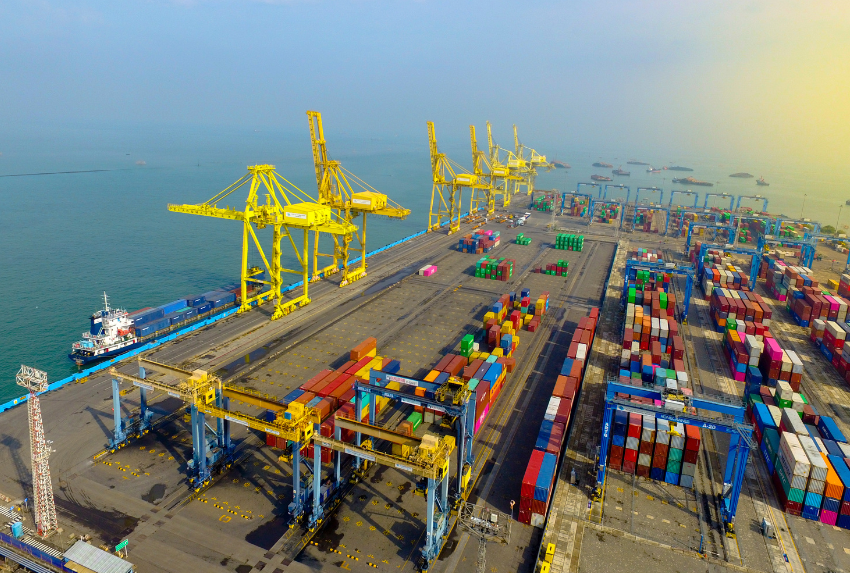The application of U.S. tariffs on certain world markets has created waves in the scene of world trade. One area that has suffered especially from these developments is Southeast Asia. Particularly for countries like Vietnam, Cambodia, Thailand, and Malaysia, U.S. tariffs have a significant financial effect on the export market of Southeast Asia. These nations have long relied mostly on the United States as their trading partner, and given tariffs now in place, their future economic paths remain unknown. This blog seeks to investigate how U.S. tariffs are affecting Southeast Asia, the difficulties these countries confront, and the steps they are doing to lessen the effects.
How immediately do U.S. tariffs affect Southeast Asia?
With levies of 46% and 49%, respectively, nations like Vietnam and Cambodia have already seen a notable effect from the U.S. tariffs. These very high tariffs have left these nations vulnerable. For almost thirty percent of its GDP, Vietnam, for instance, depends on exports; most of it goes to the United States. With around 25% of Cambodia’s GDP derived on U.S. trade, the country’s export economy depends similarly on the United States. U.S. tariffs imposed on these nations run the danger of upsetting sectors, lowering trade volumes, and slowing down economic growth.
Southeast Asia depends mostly on exports, hence any taxes that interfere with this flow harm their economic situation. Nations like Vietnam and Cambodia, who have seen amazing economic expansion over the past three decades, are now confronting a far more uncertain future. Particularly in sectors like textiles, electronics, and apparel, where the U.S. has been a main market, many believe the economic impact of these tariffs could lower GDP growth rates and cause unemployment to climb.
Simply said, the reliance of the area on the U.S. market makes the U.S. tariffs more than just trade barriers; they directly jeopardize future growth and economic stability. With the tariffs’ economic effects spreading across several sectors, Southeast Asian countries have to be fast in adapting to prevent a notable downturn.
How Are Vietnam and Cambodia Reacting to US Tariffs?
Long having close political and economic links to the United States, Vietnam has been among the most outspoken nations opposing American tariffs. The Vietnamese government has dispatched high-level officials—including the Deputy Prime Minister—to Washington in reaction to the levies to negotiate tariff reductions. In an attempt to lessen the economic effects on both countries, Vietnam has also suggested removing all taxes on American goods. The U.S. tariffs, however, have mostly been directed on correcting the trade deficit, hence there is doubt over whether these diplomatic gestures will have any real influence.
Actually, the U.S. tariffs on Vietnam are a component of a larger plan meant to lower the trade deficit. Sending Chinese goods through Vietnamese ports, the United States has accused Vietnam of serving as a middleman for Chinese goods, therefore avoiding U.S. taxes. Although the precise proportion of Vietnamese exports that are really Chinese products is unknown, estimates range from 7% to 16%. This has sour diplomatic ties between the two nations and emphasizes even more the financial influence of the tariffs.
Another nation mostly dependent on U.S. trade, Cambodia finds an even more grave scenario. With the textile sector the biggest employer in Cambodia and providing consistent employment for 750,000 people, the 49% tariff on goods from the nation might have terrible effects. Citing the possibility for significant job losses and a rise in poverty as main issues, the Cambodian government has asked the U.S. to review the tax. Particularly when unemployment increases and societal discontent becomes more likely, the economic effects of these tariffs could throw off Cambodia’s already precarious political framework.
Can Southeast Asia Adjust to U.S. Tariffs’ Created New Trade Reality?
The U.S. tariffs have caused nations in Southeast Asia to rethink depending mostly on the United States as a commercial partner. These nations have started looking for other markets and looking at methods to diversify their economies once tariffs are in place. Though less dependent on the United States for commerce, nations like Thailand and Malaysia are not exempt from the larger economic influence. For less than 10% of its GDP, Thailand, for instance, depends on the U.S.; still, the overall effect of the U.S. tariffs would probably help to explain the ongoing economic stagnation of Thailand.
Thailand has already looked at ways to lessen the financial effect of these levies, including initiatives to deepen relationships with other world powers as China and the European Union. These initiatives, though, have not yet produced notable outcomes. Furthermore, Thailand’s continuous efforts to boost economic growth—which have lasted almost a decade—mean that the tariffs’ economic effect could be especially noticeable.
With just over 11% of its exports to the United States, Malaysia has less exposure to U.S. tariffs. Nonetheless, Malaysian officials have also expressed worries about the wider effects U.S. tariffs would have on world trade and have worked to diversify their export markets.
Notwithstanding these initiatives, it is still unclear if Southeast Asia can totally avoid the effects of U.S. tariffs on its economy. Nations will have to act quickly to create new economic alliances and lessen their susceptibility to upcoming trade interruptions.
Given U.S. tariffs, what long-term remedies might Southeast Asia need?
Southeast Asian countries have to act both now and long term to control the economic effect of the U.S. tariffs. Short term, the emphasis should be on getting tariff exemptions or cuts by ongoing negotiation with the United States. For instance, Vietnam has made offers to remove all taxes on American goods, and Cambodia has asked that the U.S. postpone the duties in return for trade negotiations. Some of the immediate financial strain the area is under could be lessened by these diplomatic initiatives.
Long term, Southeast Asia has to diversify both its economy and its export markets to help it to lessen its reliance on the US market. Strengthening intra-regional trade agreements and building closer economic linkages with rising Asian, European, and international markets would help to accomplish this. Nations who can build closer ties between their economy and a wider spectrum of trading partners will be more immune to the effects of tariffs.
Furthermore less subject to trade barriers, Southeast Asia may concentrate on moving towards more sustainable and high-value industries such technology and innovation. Southeast Asia can create stronger economies more ready for future global trade interruptions by spreading its economic base.
What steps may governments in Southeast Asia take ahead?
Southeast Asian nations have to take many strategic actions to protect their economies in reaction to the financial effects of U.S. tariffs. These actions comprise:
Southeast Asia has to lessen its dependence on the United States and increase commercial links with other areas of diversification. Using this strategy might mean increasing trade with Europe, India, and China.
Governments have to give investments in sectors like technology, renewable energy, and sophisticated manufacturing top priority, ones less sensitive to tariffs.
Southeast Asian countries should keep negotiating free trade agreements and supporting regional trade by means of participation in regional economic institutions like the ASEAN Economic Community.
Encouragement of innovation and technology-driven businesses will help to establish new growth prospects free from reliance on conventional export sectors and offer financial stability.
Finally
For nations like Vietnam, Cambodia, and Thailand, the U.S. tariffs on Southeast Asia are a major obstacle. These countries, who mostly rely on exports, are suffering greatly economically from these additional levies. The tariffs’ economic effect can prevent their stability and expansion in the next years. Southeast Asia can thus try to lessen the effect of these tariffs and create more resilient economies by diversifying trade ties, enhancing regional collaboration, and investing in high-value sectors. How successfully these countries negotiate the difficult problems presented by U.S. tariffs will determine the trade relationships Southeast Asia has with the United States and the globe at large going forward.








